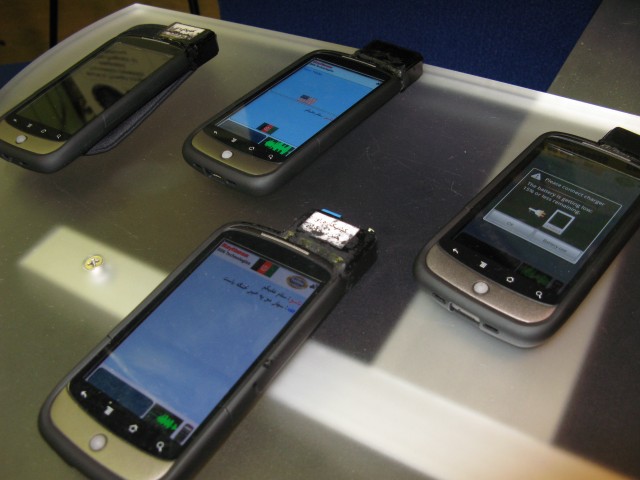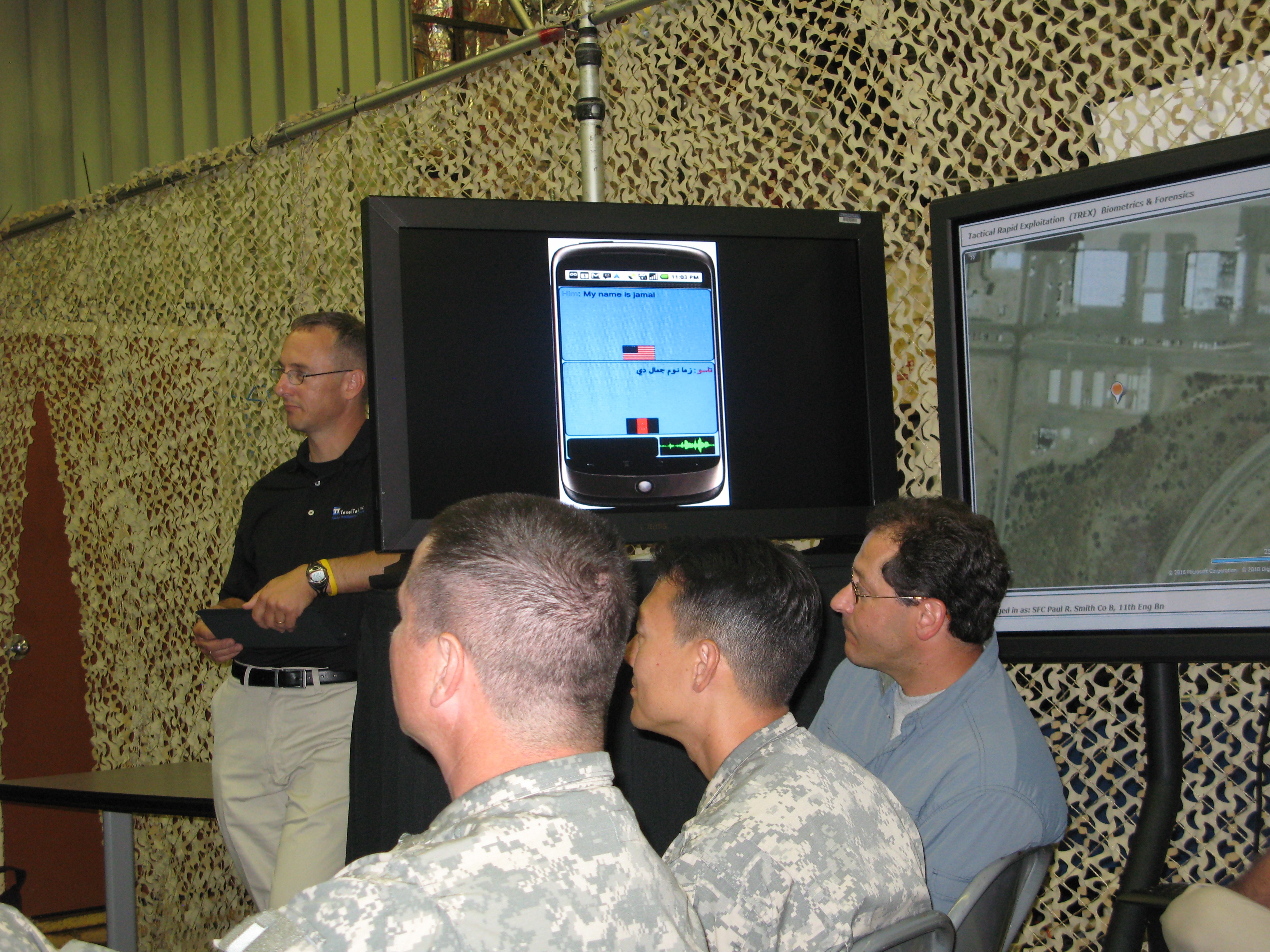FORT HUACHUCA, Ariz. -- Smart phone. Translation System for Tactical use. TransTac. Machine Foreign Language Translation device.
Although it goes by many names, this device performs one function, speech-to-speech translation, and it's a technological solution capable of filling in the gaps when there aren't enough human linguists available.
The TransTac device, which will be fielded for the first time to the 101st Airborne Division (AASLT) to Afghanistan before the end of the calendar year, will be used by Soldiers to translate English to Dari or English to Pashto, and vice-versa.
The personnel in the Training and Doctrine Command Capability Manager-Biometrics and Forensics team at Fort Huachuca are the capability developers for the TransTac device.
Patrick O'Malley, a machine foreign language translation subject matter expert with TCM-BF, says their job is to study the Army's needs. While doing that, they follow the methodology of "what's the gap between where we are today and where we need to be'"
"One thing we noticed is we can't speak the languages of Afghanistan, and DLI (Defense Language Institute) can't train enough people fast enough to learn those languages. So there's our gap," he explains.
"The human linguist is still at the top, especially the contract interpreter who knows English and Dari [or Pashto] very well," O'Malley notes, adding the device does not eliminate the need for interpreters, but it does allow the interpreters to attend to higher-level tasks.
"You want the interpreter questioning the most important people, but if you want to screen people ... this is adequate just to find out who's who," O'Malley says. "For interrogation, you need a human. A machine is not going to understand the subtleties of speech, like whether somebody's lying to you ... where a human interpreter could.
"The concept of a talking phrase book has been around for 15 or 20 years," O'Malley explains, but the previous devices Soldiers used had phrases they could choose from, but the device did not have the capability to allow Soldiers to ask their own questions. Also, there was no capability for the other person to respond.
The project began about four years ago, with a device that could translate English into Iraqi-Arabic and vice-versa. Soldiers used laptops at the time, but the feedback TCM-BF was getting is Soldiers wanted a smaller device.
So they began to look for a more compact device with capability to assist Soldiers and interpreters. They looked at different ways to provide this technology by establishing a program of record. While this is being built, TCM-BF personnel also look for a short-term solution, called a quick reaction capability. The Defense Advance Research Project Agency does research and seeks vendors to build the product, and the government will select the best vendor before they field the device.
Putting something on a smart phone is easier because Soldiers already understand the technology, O'Malley explains.
There are two prototypes the Army is considering using. The first includes each speaker having a phone. Speakers can communicate back and forth using their own phones (push-to-talk), which work up to 100 feet away. The other option is using one device the speakers pass back and forth.
O'Malley says the devices and application are simple to use and describes it as a "state-of-the-art" smart phone.
There are voice commands, such as "play instructions," and the phone will give the instructions, in Pashto or Dari, on how to use the phone.
"Not only does it say and synthesize what it would be in the other language, but it also transcribes it in writing on the screen," O'Malley explains, noting the writing on the screen is beneficial if the other person doesn't hear the words right or if they're in a noisy environment.
"We trained Soldiers how to use these, and it didn't take more than 10 minutes," he says, adding there are other "niceties" in the phone's programming such as reconfiguring the phone or changing the target language.
Although the device has to adjust to a voice, O'Malley says the smart phone does a good job of recognizing a voice.
One of the potential issues TCM-BF personnel noticed was limited battery life. Since smart phones have large processors and these devices have three networks - cellular, Bluetooth and WiFi - O'Malley says they were concerned about the battery life. They performed tests and they realized the phones were getting four hours of battery life.
"That was a problem. Four hours isn't good enough," he says. "We decided to shoot for 12 hours because a military mission could be up to 12 hours long."
They turned all the networks off and performed a few memory management tasks, and were able to get up to 22 hours of battery life if they were just using the speech-to-speech translation application.
The TransTac will be used at checkpoint operations, base security and medical problems. The highest-level task they would tackle with the device is tactical questioning.
Also, the device keeps a log file, so if something important was said during the conversation, the Soldier can upload the transcript, which can be used by an intelligence analyst.
This is the first fielding of these devices, and is considered the operational assessment for the capability. The goal of the operational assessment is to see if the technology is ready to field theater-wide.
O'Malley says Soldiers need to be aware that not all the Afghans will have the same reactions to the device. The Soldiers will need to be situationally and culturally aware of, and sensitive to the country's environment.
He also says this is part of the vision of "connecting Soldiers to digital applications," and the long-term goal is to provide each Soldier a smart phone during basic training.
During this first fielding, TCM-BF personnel will provide Soldiers with surveys to complete and tactics, techniques and procedures for using the device.
There is also a secondary purpose for the phone, and that is to help Soldiers learn the language. O'Malley says in the future, the Army will be able to add other languages if the Soldiers need that capability.
The Army would like to introduce more specialization capabilities such as name recognition, or combat life-saving knowledge and first aid. They also hope to improve the device by training it on specific missions, which will improve the vocabulary.
Related Links:
Spoken Language Communication and Translation System for Tactical Use (TRANSTAC)




Social Sharing